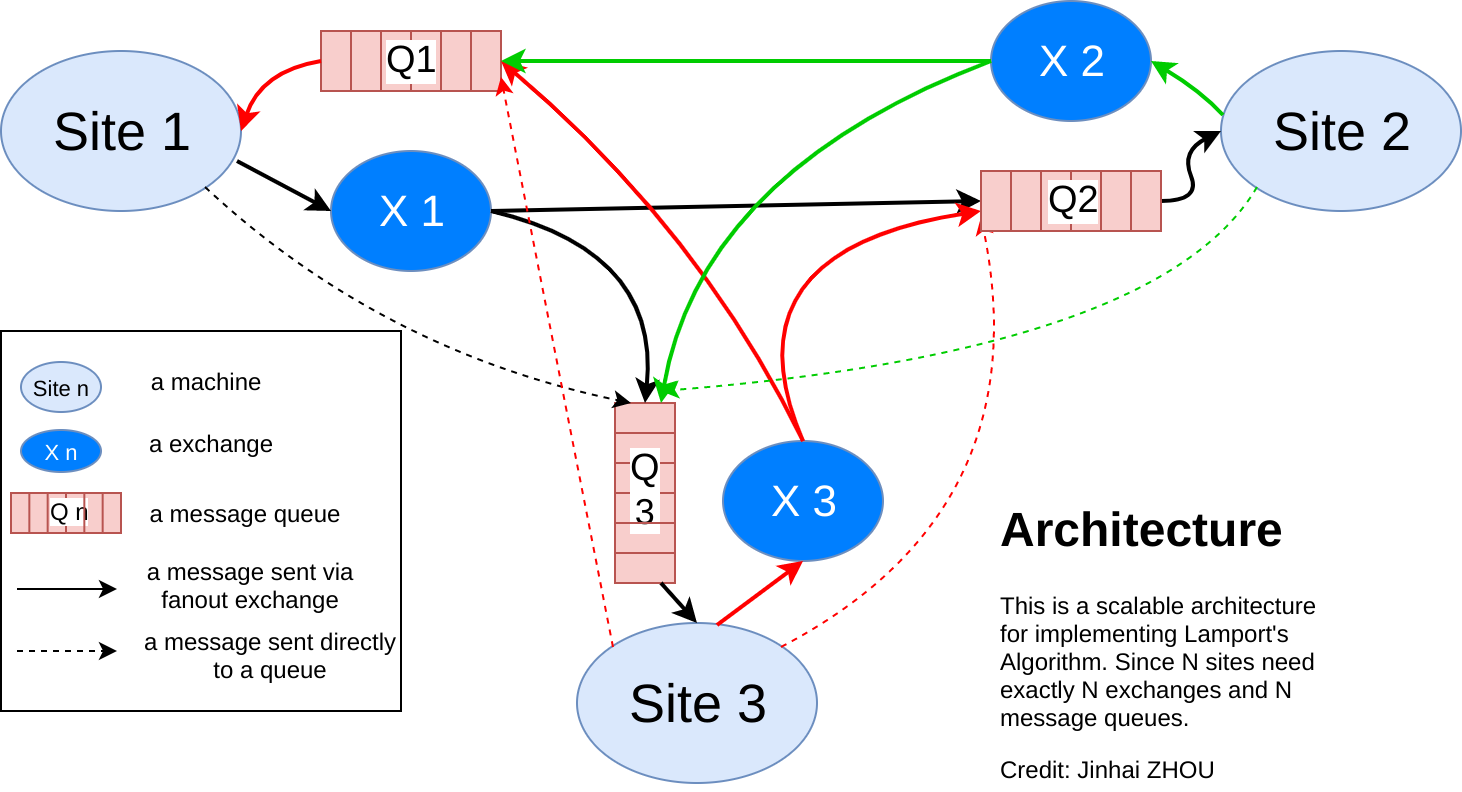This is a school project of the course Implementation of Distributed Software Systems at IMT Atlantique (ex: Telecom Bretagne), the subject of this project (in French) can be found here, and the report (also in French) can be viewd here.
This is an implementation of Lamport's distributed mutual exclusion algorithm, message sending and receiving are based on Pika, the python implementaion of RabbitMQ/AMQP.
This is rather a demo for mutual exclusion on a distributed system than a practical mutual exclusion solution for large-scale distributed systems, for better performance we can use Maekawa's algorithm or Raymond's algorithm, below is a complexity comparison of these algorithmes measured by Messages per request
| Algorithme | Messages per request |
|---|---|
| Lamport | O(N) |
| Maekawa | O(√N) |
| Raymond | O(log N) |
For example, if you want to simulate a distributed system with 3 machines, and machine 3 want to get into the critical section 2 second after launch, you can modify the senario in the site.py
if sys.argv[1] == '3':
time.sleep(2)
site.request_for_critical_section()then you need launch 3 terminals to simulate 3 machines
-
in terminal 1
python site.py 1 3
-
in terminal 2
python site.py 2 3
-
in terminal 3
python site.py 3 3
the first parameter stands for the id of that site, the second parameter stands for the total number of site
then events like receiving a message, sending a message, entering a critical section, etc will be print to the standard output
- requestQ.py implements the request queue data structure base on heapq, the Pyhton implementaion of the priority queue
- consumer.py implements the majority logic of the Lamport's Algorithm, i.e. Executing the critical section and Releasing the critical section, the implementation is based on Pika's Asynchronous consumer example
- publisher.py implements the Requesting the critical section part of the Lamport's Algorithm, the implementation is inspired by RabbitMQ's Remote procedure call (RPC) Tutorials
- site.py imitates the behavoir of a machine, it can initiate a request for entering the critical section.
Steps to launch a site is described as below
- instantiation a site by calling the class
Site()and giving 2 parameters, parameters could be string or int, indicate the site id(count from 1) and the number of all site respectively.site = Site(site_id, total_site)
- start the consumer process by calling the
run_consumer_process()functionsite.run_consumer_process()
- define publisher parameters by calling
start_publisher()functionsite.start_publisher()
- initiate a request for entering the critical section by calling
request_for_critical_section()functionsite.request_for_critical_section()
- instantiation a site by calling the class
the architecture is based on RabbitMQ is shown in figure below
credit: Florencia Alvarez for the installation code
sudo rabbitmq-plugins enable rabbitmq_management
sudo rabbitmqctl stop
sudo invoke-rc.d rabbitmq-server startthen launch a web browser with http://localhost:15672
-
start RabbitMQ server
sudo rabbitmqctl start_app -
stop RabbitMQ server
sudo rabbitmqctl stop_app -
⚠️ reset configuration, histroy messagessudo rabbitmqctl force_reset
- RabbitMQ Tutorials: Publish/Subscribe(using the Pika Python client)
- RabbitMQ Tutorials: Remote procedure call (RPC)(using the Pika Python client)
- rabbitmqctl(1) manual page
- Pika Documentation:Asynchronous consumer example
This work is licensed under a Creative Commons Attribution 4.0 International License.

